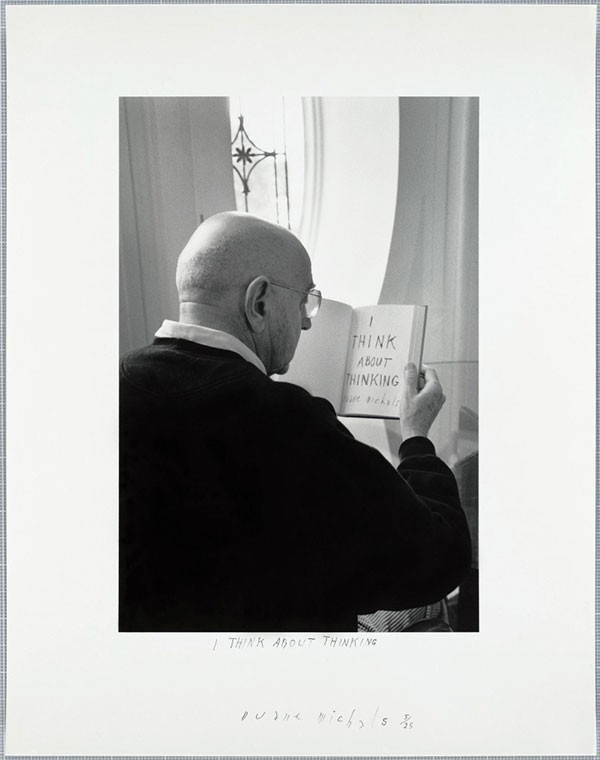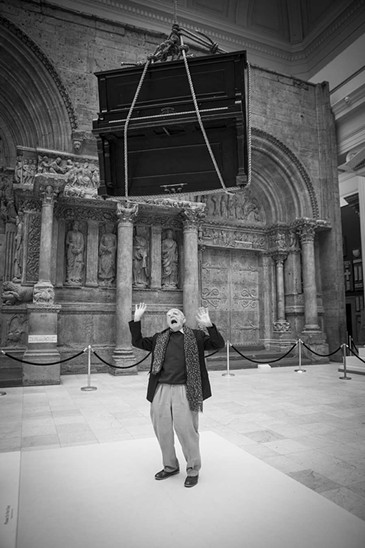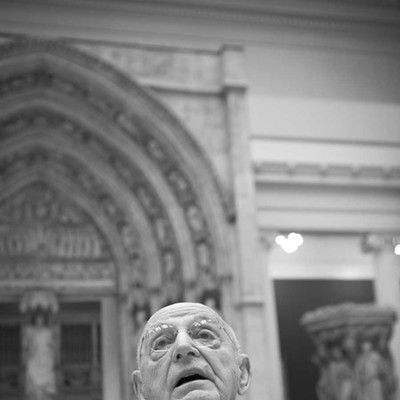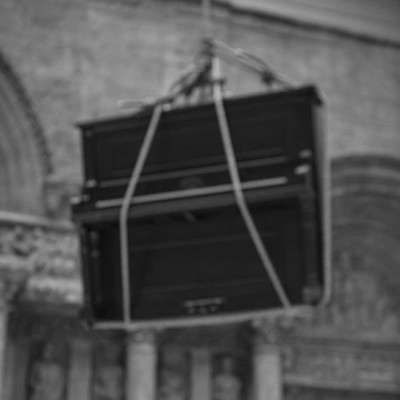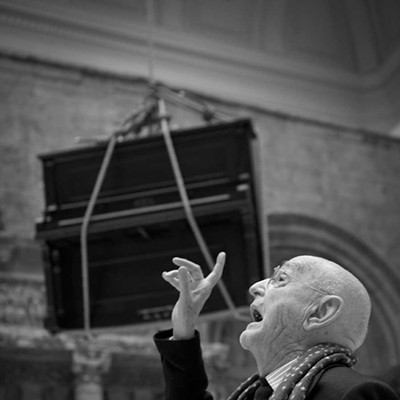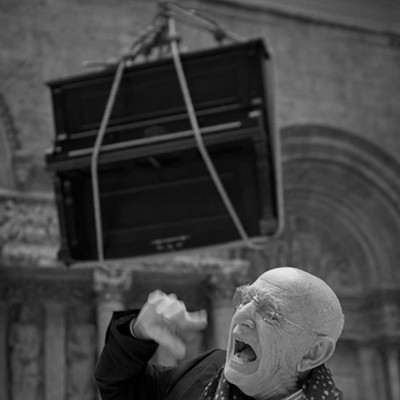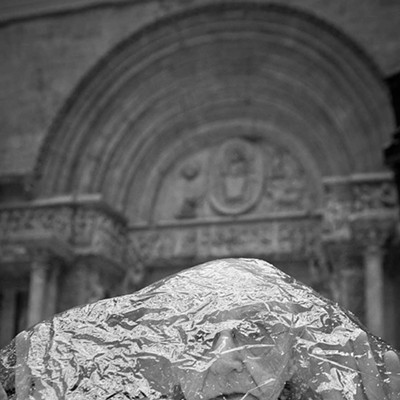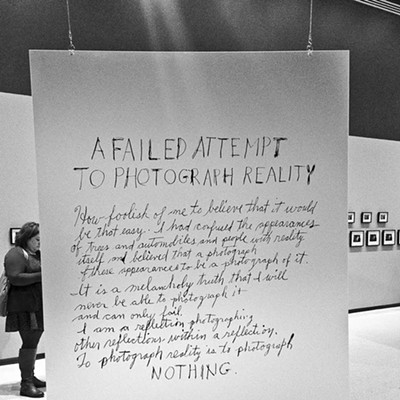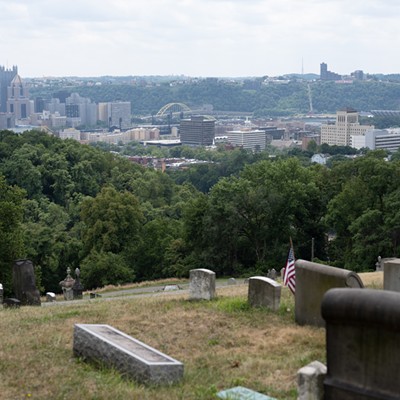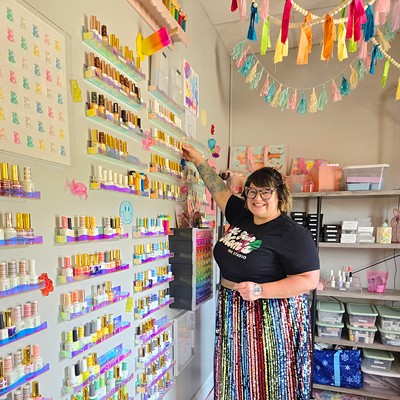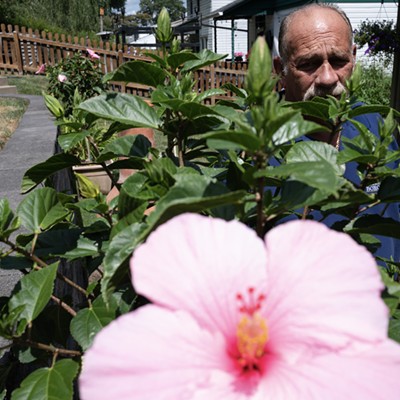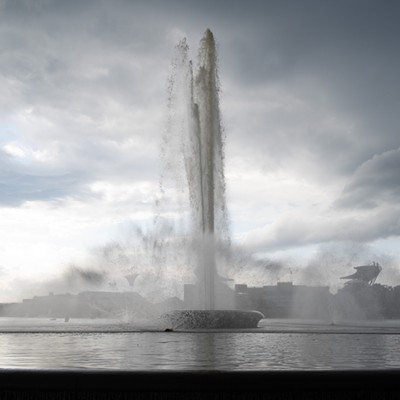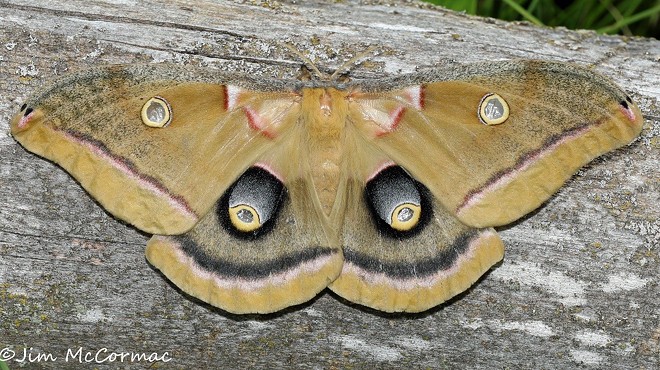Back before the Carnegie Museum of Art got the idea for the retrospective Storyteller: The Photography of Duane Michals — 10 years ago, in 2004 — Duane Michals himself published the book The House I Once Called Home. Michals combined poems and multiple-exposure images made by fusing old photographs he had taken inside his family's home, in McKeesport, with newer images made of the same rooms after the house had become derelict.
The most biographical of any of this pioneering photographer's work, the book suggests the introspection that befalls any artist in the twilight of his career. The decaying house was a metaphor for the artist's own eventual death. It's a topic that has recurred in the 82-year-old Michals' work from early on, in pieces such as "Death Comes to the Old Lady" (1969), "The Spirit Leaves the Body" (1968), "A Man Going to Heaven" (1967) and "Grandpa Goes to Heaven" (1989).
Around the time of the book's release, the documentary film Duaneland was being produced locally, directed by Joe Seamans and Stephen Seliy. I had been invited by the directors, and by the Silver Eye Center for Photography, to participate in a shoot in which Michals and a group of people would look over some of his work inside Silver Eye's South Side gallery.
Our scene ended up on the cutting-room floor, but meeting and interacting with Michals was a great experience. In anticipation of the release of Duaneland, I traveled to New York to conduct an interview for City Paper with Michals in his home. I took the subway to 14th and Union Square and walked the few blocks to his building. It was thrilling and Michals is a wonderful, cordial host. That interview ran as a cover story the week Duaneland was released, with a photograph I had shot of Michals on the cover.
Subsequently, I've tried to see Michals anytime he makes a public appearance here in Pittsburgh. He pops up once a year or so. Trips are harder to make now that his partner of 55 years, Fred Gorée, is housebound with Alzheimer's and Parkinson's afflictions, with Michals caring for him. (They tied the knot in 2011, just a week after same-sex marriage was legalized in New York State.)
In the festive opening days of Storyteller, curated by the Carnegie's Linda Benedict-Jones, I revisited Michals to check in with this mentor of mine, and of so, so many other of my fellow photographers and artists. Here is a transcript of that session.
This whole exhibition, with the combination of your images and your personal art collection, presents a very true and full retrospective, not just of your work but also of your life. Now that you're 82, are you looking to "tie up loose ends?"
No. It's very strange. You're a kid and then an adolescent and then you go to the Army. ... Your grandparents were always old and you never think of yourself like that. But now, the barbarians are at the gate, age is at the gate, and I do want to simplify. The Hindus say that a man does the business of his life and then he prepares himself for his death. I was always attracted to that notion. I would like to simplify, to reduce and to get down to basic things. I don't know how to prepare myself for my death because I am an atheist and I don't have the same bag of tricks that religious people do, but part of the process is having this mega exhibit. It does, to a great extent, tie things up and finish[es] business. It makes me feel good to see how much work I've done!
Linda Benedict-Jones told me a story about putting the exhibition together and borrowing work sold to private collectors, and how when you came to the museum to go over the pieces with her, there were some that you'd forgotten you'd done!
There's a particular photograph here about taking the subway and finding yourself in heaven that I had completely forgotten about! I'm hugely prolific.
Is there any correlation between works like "Who Is Sidney Sherman?", where you critique the art world, and the fact that you haven't had a major museum show like this in the states in over 20 years? Did you piss the art people off?
I don't think about it. If you love your field, and I love my field, you have opinions about it. Anyone who has a vested interest in their field and cares about it has opinions; how can you not? People who have power are museum directors and curators and Sotheby's. I'm just one little voice. I don't have any power. But it's amazing when you say one little critical thing about something institutional! I don't understand the brouhaha with being critical.
The most current work in the show, where you are painting on found antique tintype plates, that's all new, isn't it? Is how you've been working recently — more from inside your home than out shooting photos elsewhere — influenced by your having to be a caregiver to Fred?
I did do some painting a bit in the '80s, but I always wanted to come back to it. And yes, I have been a caregiver and have been for a number of years. My main obsession is taking care of him. I did the book ABCDuane over the last year and writing it was a great refuge for me to get away from my anxiety over him. I've always explored the idea of death. But now it's a fact. Now I'm dealing not just with the notion of death or the fantasies of the implications of death; now the lion is at the door and it's the real deal.
Have you had any recent revelations about your work?

